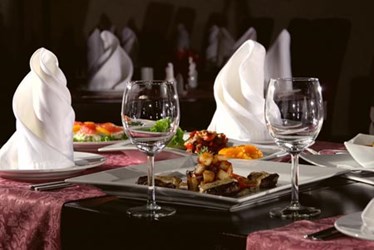Hospitality IT News For VARs —October 18, 2013

By Anna Rose Welch, Editorial & Community Director, Advancing RNA

In the news, resort sales are making a comeback, c-stores are competing with QSRs for dining dollars, and one vision for the future of restaurants is filled with hi-tech trends.
Resort Sales Achieve Highest Volume Since 2007
Jones Lang LaSalle reports that the resort sector is making a comeback after the recession. This year, the resort sector accounts for 18.4 percent, or $2.46 billion, of total investment transaction volume. This is the highest volume in the segment since 2007, and it has more than tripled since last year. Revenue per available room (RevPAR) stands at $102.99, and average daily rate (ADR) is $153.81. The U.S. resort sector includes 3,900 hotels with 608,000 rooms. It accounts for 13 percent of the total U.S. hotel room supply.
C-Stores And QSRs Battling For Consumer Lunch Dollars
Convenience Store News highlights some of the ways c-stores have begun using and profiting from QSR operating tactics. Some of these tactics include regularly remodeling stores, supplying a wide array of coffee options, menu innovations, and making and delivering pizza. While c-store food used to be a secondary impulse purchase following a gasoline purchase, one expert claims that gasoline has now become secondary behind meals. Retailing expert David Bishop argues that c-stores are setting themselves up as strong competitors against fast-casual restaurants because of better prices, combo deals, and limited offerings. Convenience Store News also cites an NPD report claiming that c-stores are steadily gaining more and more lunchtime business — QSR’s most lucrative mealtime.
Restaurants Will Have Hi-Tech Advancements By 2020
Nation’s Restaurant News makes predictions for the future of the restaurant industry and claims that restaurants will have hi-tech advancements by 2020. The article says the line between industry segments will disappear, with QSR’s adopting casual dining décor and all restaurants adopting tools to speed up service. Some of the advancements highlighted include digital ordering, voice recognition software in drive-thrus, microchip technology, and more outlets for busy, technologically reliant customers.
Membership Management Is Key To Loyalty Program
Victoria Michaelson for Business 2 Community provides a list of suggestions for retailers looking to create a loyalty program that best meets the needs of customers. Some suggestions include offering a survey and having customer support meetings with staff members closely connected to clientele. She also suggests turning to online communities to communicate with customers and providing events that support and create community among loyalty members. How can your customers keep track of the data? She suggests membership management software.
Hospitality IT Talking Points
Mark McKinney for MediaPost lists some of the ways that loyalty programs violate psychology principles of building trust. According to McKinney, many brands will use the negative contrast effect in which rewards become expected, rather than a bonus. Similarly, cognitive dissonance (loyalty programs bribing a customer into behavior) and reactance (telling people what to do) are also problematic loyalty program principles. To help loyalty programs avoid these approaches, McKinney also proposes several methods to create likeable loyalty programs and encourage consumer trust.
QSRweb’s article “Menu Trends driven by sophisticated customers” cites a presentation by Nancy Kruse, president and industry analyst at The Kruse Company. Kruse says menu must-haves include freshness, flavor, premiumization, customization, and miniaturization. Ethnic foods, sophisticated tastes, experimentation, approachability, and chef sensibility are currently influencing flavor trends. Emphasis on local foods, or providing more clarity about where the food comes from can help a restaurant achieve the freshness factor.
The National Restaurant Association has released a new report entitled “Tableservice Restaurant Trends 2013.” The report focuses on consumer preferences and attitudes, as well as business-building details and challenges for family, casual, and fine dining operators. The report states more than one-fourth of tableservice restaurant sales come from tourists, and older, higher income males are the most frequent tableservice customers. In addition, 38 percent of operators believe food trucks will become more popular in their segment, and 50 percent of family-dining operators believe that offering packaged food items for sale will be popular.
